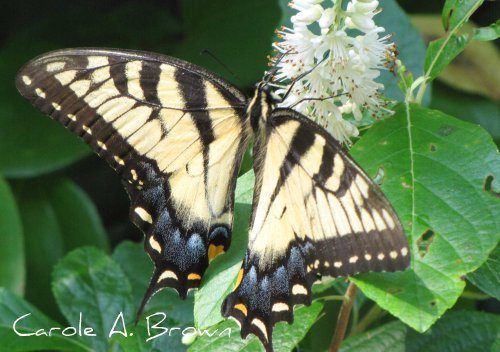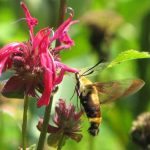The Tiger Swallowtail is a large and stunningly beautiful butterfly, and a welcome visitor to your butterfly garden. Because of its size, it gets noticed even by gardeners and others who may not be looking for it, making it, along with the Monarch Butterfly, one of the most widely recognized butterflies.
After spending the winter in its chrysalis, the Tiger Swallowtail butterflies emerge in the spring. The chrysalis looks like a rolled up brown leaf left dangling from a host plant tree. In some Southern states, you may see these butterflies year round.
In spring, the adult butterflies emerge, and the males will go patrolling for females. Eggs are laid on suitable host plants. It takes about 30 days to go from egg to caterpillar, to chrysalis, to adult.
Tiger Swallowtails are generalists, meaning the caterpillars are able to feed from a wide variety of host plants, including wild cherry, magnolia, birch, ash, cottonwood, and willow. Adding some of these native trees to your ecosystem garden will ensure that you will have the beauties close by.
Note that those pretty Japanese Cherries that are so famous in Washington DC and around the country are NOT host plants for this caterpillar. You must have a native cherry to appeal to these butterflies. The best way to determine this is by checking the USDA plants database or by contacting your local native plant society
If you live on the West Coast you will be seeing the Western Tiger Swallowtail (Papilio rutulus). And on the East Coast you’ll have the Eastern Tiger Swallowtail (Papilio glauca).
Adult Tiger Swallowtails will feed on nectar, so be sure to have a wide variety of nectar plants in your butterfly garden, including purple coneflower, buttonbush, pepperbush, and a large selection of native wildflowers.
More From Ecosystem Gardening:
Submit your review | |








